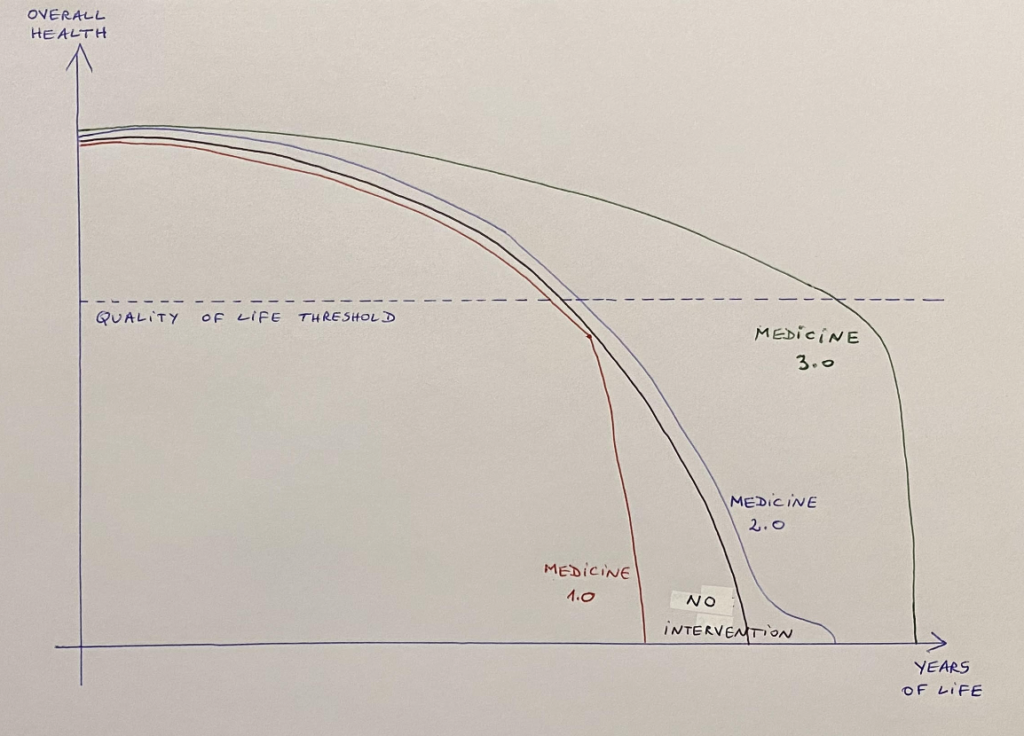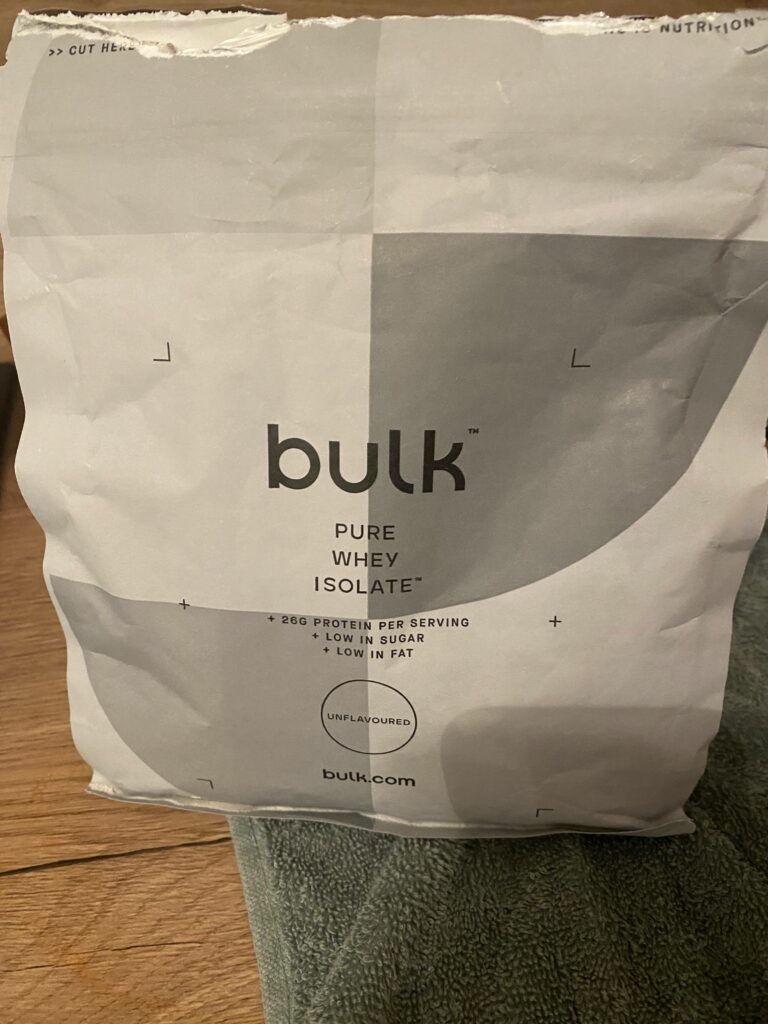This article talks about one of the very first practical steps I’m taking in helping people reach a healthspan of 100 years or more: creating Dondy, the first online consultation platform, with a bunch of fellow entrepreneurs, exclusively dedicated to longevity and preventative health.
My own longevity journey
I’ve been followed for a while now by 2 medical doctors with expertise in preventative health and longevity, one in France, and one in the United States. I’ve learned a great deal about my body, my health, and my biggest risk factors when it comes to my genome. But having access to such experts at a reasonable price hasn’t been an easy feat:
-the standard primary care medical doctors, the ones you visit when you have a flu or a minor infection, were frustrated with me visiting them and having no specific problem (other than being healthy and aiming at staying like that as long as possible).
-there are luxury longevity clinics, such as Clinique La Prairie, mostly dedicated to celebrities such as Carla Bruni.
-there are private doctors such as Peter Attia, charging around $ 100 000 / year for his longevity expertise.
-there are more accessible longevity clinics, but only in the US, Israel, Dubai and other destinations, but none in France.
Long story short, none of them seemed to fit my need, which was to take care of my long term health through – 1. efficient, 2. informative and 3. self-empowering 4. no BS – longevity consultations at an affordable price. After searching a lot, I’ve found out the 2 doctors I’ve mentioned earlier, but what a challenge to get there! What a bumpy road! Only warriors and/or people with a lo(ooooooo)t of free time can get there!
Dondy: the idea and vision
Once upon a time, Bill Gates had a vision: “Early on, Paul Allen and I set the goal of a computer on every desk and in every home. It was a bold idea and a lot of people thought we were out of our minds to imagine it was possible”.
The audacity of Bill’s vision, but also the quality of the execution which came afterwards and turned his vision into reality inspired me. I said to myself: there are roughly 8 billion people on Earth, out of which 3 billion are older than 40 years old. Each one of these 3 billion people should have access to 1 longevity consultation per month. I would aim for the stars, but have my feet well on the ground on a daily basis to execute the plan.
I’ll be here to execute upon this vision on the long term, maybe 20 years, maybe more. I’m not here for short term profit or fame. I’m here to fix healthcare at global scale.
Practical aspects of Dondy
This is where the idea of creating a large global and affordable online longevity service came to my mind like a no-brainer: living the whole experience as an insider allowed me to imagine how this service should work:
-it would be a mix of medical expertise, life coaching and AI assistance. You see, optimizing your healthspan requires 5 levels of intervention: physical activity, food, sleep, mental health and supplements/drugs. It seems easy, but being specific about the details in each one of these aspects requires medical expertise, and differs greatly from person to person. Also, medical expertise is not enough, as lifestyle changes need self-discipline and dedication. Knowing what you have to do does not mean you’ll do it. This is where coaching and AI assistance comes into play: understand the kind of personality you have, and pushing for the right measures, at the right time, not too hard because you’ll quit, not too easy because it’s going to be insufficient. We’re dealing with medical expertise, but also with behavioural change. AI would “understand” patients and push only as much as needed.
-it would target from the start patients all across the world, no country boundaries, the world would be our playground from day 1.
-because of how sick care works nowadays, public welfare would not pay for these kind of preventative medical services, so first they would be targeting people who accept to pay for them from their pockets. Later on, we would convince health insurance systems to pay for it, and lower the price. We would be strong advocates of transitioning from sick care (go see the doctor when you’re sick and you have symptoms) to health care (avoid being sick in first place through pro active measures).
-we would measure biomarkers and progress, on a regular basis, and give people data on how they’re improving (or not), no BS, no stories, no make believe attitude. Just help people to the extent of how much they’re willing to put into living longer healthier. The most persistent and determined of us would have full programs, with physical activity, food restrictions, etc. However, the most comfortable would have light recommendations, just to make sure they stick to the program permanently. We would be accountable (and hold our patients accountable) for how much we improve their long term health.
-as medicine and science move forward at a breakneck pace, we would integrate new recommendations, new supplements/drugs, to always be at the edge of what is possible in longevity.
Business is business
No matter how well intentioned I am, on the one hand, CASH IS KING and on the other hand “Ideas are nothing, Execution is everything”. Profit makes the difference between a failure and a success, so the venture needed to be sustainable from the business point of view. This is where the uniqueness of France came in handy:
– France has a rich and untapped academic community, with excellent scientists, doctors and engineers. I would fully leverage this unique advantage.
– France has a very generous public funding system for innovation in AI and health, under the form of non-dilutive funding. I would fully leverage this advantage also.
For the first time in my life, creating a startup in France would not only not be a drawback, it would be a terrific advantage. However, instead of limiting myself to small niche local markets, as many startups do, I would target all the countries in the world, from day 1.
The service would use a freemium SaaS business model, because it is so strong, so resilient, and so scalable.
The dream team
This project is not an individual project, it needs an army of dedicated and mission-driven people. Along the way, I was lucky enough to meet the right people to start this venture:
–Guillaume Agis . Great technical skills, great experience as an entrepreneur. Swiss knife, doing everything quickly and well.
–Maxime Kamrani . Visionary AI engineer, with long term views on longevity. Great networker, knows everyone in Longevity worldwide. Attends all the events all the conferences in the field, everyone likes him.
–Denys Coester . One of the very first medical doctors and experts in Biohacking in France. Extensive and practical experience in behavioural change in patients. Medical doctor, but also coach and hypnotherapist.
–me 🙂
What’s next?
In the very next weeks, we will focus on the following very practical goals:
– incorporate the startup
– create am MVP (Minimum Viable Product)
– integrate into a startup incubator
– get the first financing (from public non-dilutive subsidies)
– onboard the very first few customers
By the way, if you’re interested in the initiative, please sign up to our waiting list, so that we’ll be able to let you know as soon as our service becomes available!


















